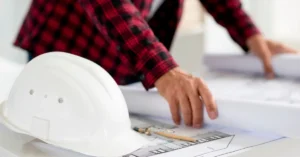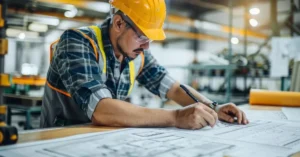Prefabrication, also known as modular construction, has become increasingly popular in the construction industry due to its ability to streamline the building process and reduce construction time and costs. However, the traditional manufacturing and assembly processes in prefabrication are still plagued by inefficiencies, errors, and delays. Fortunately, Building Information Modeling (BIM) and Artificial Intelligence (AI) are now transforming the prefabrication landscape, enhancing manufacturing, and improving assembly for better building outcomes. In this blog, we will explore how BIM and AI are revolutionizing prefabrication for efficient manufacturing and assembly processes.

What is BIM?
Building Information Modeling (BIM) is a digital process that enables architects, engineers, and builders to create and manage a 3D model of a building’s design, construction, and operation. BIM provides a collaborative platform for all stakeholders to share and access critical building information, such as design data, materials, and project schedules. BIM can also simulate different scenarios and analyze the building’s performance, which helps identify and address design errors and clashes before construction begins.
What is AI?
Artificial Intelligence (AI) refers to the simulation of human intelligence in machines that can perform tasks that typically require human intervention, such as learning, reasoning, and problem-solving. AI can process large volumes of data, identify patterns and anomalies, and make accurate predictions and decisions based on that data. AI can also automate repetitive and manual tasks, such as quality control, scheduling, and inventory management.
BIM and AI in Prefabrication
BIM and AI can transform prefabrication processes by enabling automation, digitalization, and optimization of manufacturing and assembly processes. Here are some ways BIM and AI are enhancing prefabrication:
1. Design Optimization
BIM can enable architects and engineers to optimize designs for prefabrication by considering manufacturing and assembly requirements from the outset. AI can analyze different design options and select the most efficient and cost-effective solutions based on the prefabrication process.
2. Material Optimization
BIM can help identify the most suitable and cost-effective materials for prefabrication based on their availability, sustainability, and performance. AI can also optimize inventory management and reduce waste by predicting the required materials and quantities for each project.
3. Automation and Robotics: BIM and AI can enable the automation of manufacturing and assembly processes by integrating with robotics and other automated systems. Robots can assemble prefabricated components accurately and efficiently, reducing labor costs and errors.
4. Quality Control: AI can perform real-time quality control checks during the manufacturing and assembly processes, detecting defects, and errors before they become costly problems. BIM can also provide a digital record of the manufacturing and assembly processes, enabling stakeholders to track and verify each step of the process.
5. Scheduling and Logistics: BIM and AI can optimize the scheduling and logistics of prefabrication by predicting project timelines and optimizing the supply chain. This enables manufacturers to deliver prefabricated components to the building site just-in-time, reducing the need for storage and transportation costs.
Benefits of BIM and AI in Prefabrication
The integration of BIM and AI in prefabrication can offer several benefits to stakeholders in the construction industry, including:
1. Increased Efficiency: BIM and AI can reduce errors, delays, and waste in prefabrication processes, resulting in faster and more efficient construction.
2. Improved Quality: BIM and AI can enable real-time quality control and verification, ensuring that prefabricated components meet the required standards and specifications.
3. Cost Savings: BIM and AI can optimize material and labor costs, reducing project costs and increasing profitability for stakeholders.
4. Sustainability: BIM and AI can enable the use of sustainable materials and processes, reducing the environmental impact of construction.
5. Improved Safety: The use of robotics and automation in prefabrication can reduce the risk of accidents and injuries, improving safety on construction sites.
Conclusion
The integration of BIM and AI in prefabrication is transforming the construction industry by enhancing manufacturing and assembly processes, reducing costs, and improving building outcomes. The benefits of BIM and AI in prefabrication are clear, and stakeholders in the construction industry should explore the use of these technologies to improve their processes and outcomes. As the construction industry continues to embrace digitalization and automation, the use of BIM and AI in prefabrication will become even more critical for achieving efficient and sustainable construction practices.
If you’re interested in learning more about architecture firms in Europe, check out this comprehensive list of the top 50 firms compiled by Archgyan. From innovative startups to long-established industry leaders, this list has it all. Take a look and discover some of the most inspiring and influential architecture firms in Europe today.
If you’re interested in architecture and want to learn more about this amazing field, subscribe to our podcast on youtube













